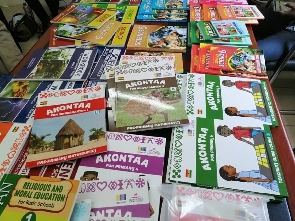Some publishing houses in Ghana seems to operate their service(publishing) as an exclusively profit-oriented venture. Understanding book publishing as a key component of the cultural industry and books as a cultural product is non-existent in producing pre-tertiary instructional materials (say textbooks).
The recent hue and cry about the content of some published books on the market don't mean the challenge is new. The selective outcry was because this recent goof was more about stereotyping and factual inaccuracies. The publishing goofs are avoidable mistakes that, if the stakeholders are more proactive than reactionary.
Somewhere in 2016, there was the 'head for carrying load' controversy. What has changed? Even the 'head for carrying load' case wasn't novel. There are the worst books on the market with misleading 'EXOTIC' contents than those books.
When the quality, theme, vocabularies, illustrations etc., of instructional materials, are compromised, its main purpose is defeated. The 'head for carrying a load; illustration and the recent stereotyping of a section of the Ghanaian public and the 'distortion' of historical facts are avoidable mistakes.
They could not have been published in the publishing houses involved were more professional unless it was deliberate.
In most cases, these mistakes are bound to happen, especially 'these one-man' publishing houses where the author doubles as the sole editor cum proof-reader. Despite these fall-outs, credible publishing houses know the value of their work beyond monetary rewards.
These recent challenges should be a wake-up call for the stakeholders to be more proactive to clamp down the miscreant within the industry because more challenges are not illuminated. A case in point has to do with some teaching aids used at the lower primaries.
Because some of the publishers are overly concerned with money and don't want to invest in research, they print aids that are not culturally appropriate. How can an image of 'queen Elisabeth be used to represent the letter 'Q'? Others have Caucasian babies' images to teach the part of the human body to our young siblings.
According to the cultural policy of Ghana (2004), 'books and teaching and learning aids used in our educational system shall be [the] product of our society with most of the content drawn from Ghanaian, African, and other relevant experiences'.
The majority of these aids are not in compliance with the cultural policy, but they are equally on the market. The effect of these inappropriate images used to illustrate concepts at that developmental stage is enormous and must be purged from instructional materials.
What the way forward? For the publishing industry to play its role within the cultural industry, the author(s) must be rigorous. Their manuscripts professionally copy-edited, rigorous editorial supervision/quality controlled to produce quality products than the 'author cum editor' publications to make sells only.
Lest I forget, 'A' is still for Apple, not Ampe.
Opinions of Thursday, 25 March 2021
Columnist: Prosper Setsoafia



















